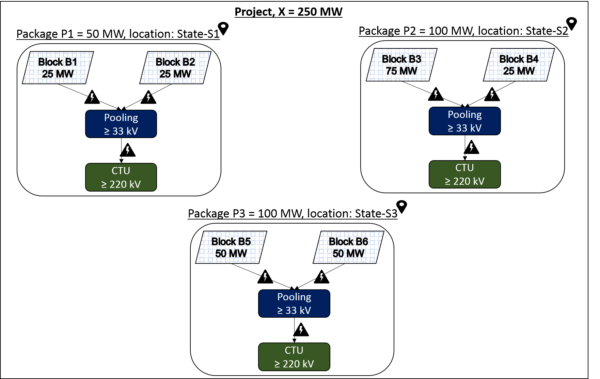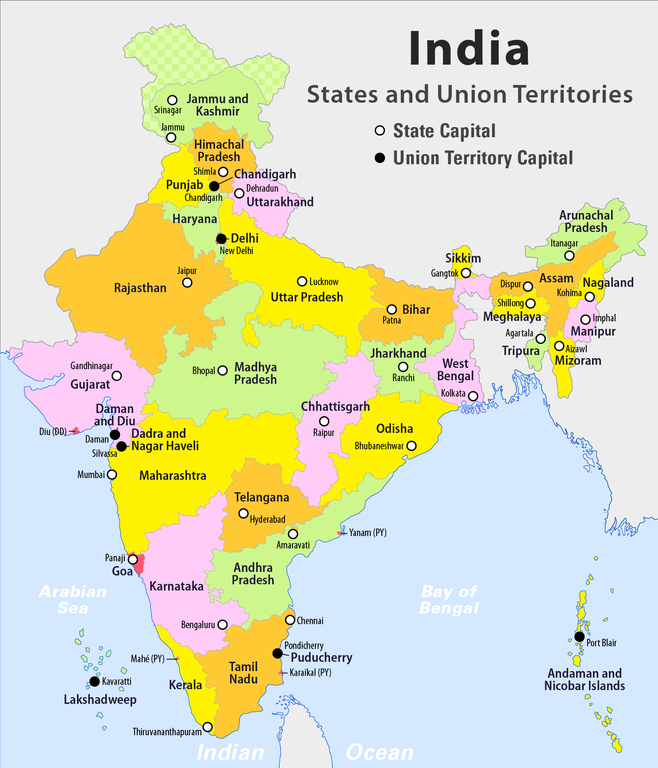SECI has released a tender for the installation of up to 2 GW worth of Interstate Transmission System (ISTS) connected solar PV power projects.
The tender, which was scheduled to be announced on January 8, was postponed by SECI at the beginning of January, for an unspecified reason.
Overall, the project has been divided into eight 250 MW plants, which may be installed anywhere in India. Under the ISTS, generated power can be sold to states other than those in which the plant has been commissioned.
All projects will be installed on a “Build Own Operate (BOO)” basis. BOO is a project model in which a private entity receives a concession from the private or public sector, or government to finance, design, construct, own, and operate a solar facility.
SECI has fixed the maximum tariff payable to INR 2.93 ($0.046)/kWh under 25-year Power Purchase Agreements (PPAs). The power generated from the plants will be sold to Indian utilities.
The tender has a provision for excess energy production. In this instance, SECI will pay 75% of the fixed tariff to the power developer.
The tender is open to the global market, meaning any solar PV developer can bid for a maximum of two projects, or 500 MW. Limited Liability Partnership (LLPs) are not eligible for participation. Bid submissions are due on March 21, 2018.
Since it is an ISTS project, with undefined locations and electricity can be sold anywhere, SECI has outlined in the document, “Already commissioned projects cannot be considered under this Request for Selection (RfS).” It added, “Projects under construction or projects which are not yet commissioned will, however, be considered, in case these projects are not already accepted under any other Central or State Schemes.”
Project>Package>Block
A developer can set up a PV plant as a ‘Block’, with a minimum 25 MW capacity at one location, and pool two of the blocks together, before connecting to the Central Transmission Utility (CTU) substation. Two blocks are called as a ‘Package’, with a minimum 50 MW capacity; however, it is not necessary to always have two blocks, i.e. one single 50 MW system can be installed. Therefore, a 250 MW project can be divided into several Packages at different locations.
The minimum voltage level for a single Block must be 33 kV, and for a single Package, 220 kV. A single tariff must be quoted for each project, however, with separate PPAs signed for each Package.

Source: SECI Tender Document
A single tariff could be an advantage for a solar developer, owing to the fact that if one site has a higher output, depending on irradiation, the revenue generated would be higher, than if the tariff is fixed, based on a low irradiation site.
The winning bidder shall bear all the costs for a plant’s connectivity, from the point of Interconnection/Delivery, also for those located in other states, and maintenance costs too.
A total of 3.2 GW worth of grid-connected solar PV projects have been tendered this January (275 MW in Uttar Pradesh and 950 in the Southern States), corresponding to the planned 3 GW tender for the month, as laid out in the Ministry of New and Renewable Energy’s (MNRE’s) roadmap.
The MNRE has planned for a total of 20 GW of PV tenders in the 2017-18 fiscal year. The remaining capacity will be tendered in February (5 GW) and March (6 GW), respectively.
This content is protected by copyright and may not be reused. If you want to cooperate with us and would like to reuse some of our content, please contact: editors@pv-magazine.com.








Where plant installation land
As it mentioned, projects can be installed anywhere in India.
IN ISTS PROJECTS, CTU means do we need to construct 220 kv ss where the inter state transmission line is passing ?